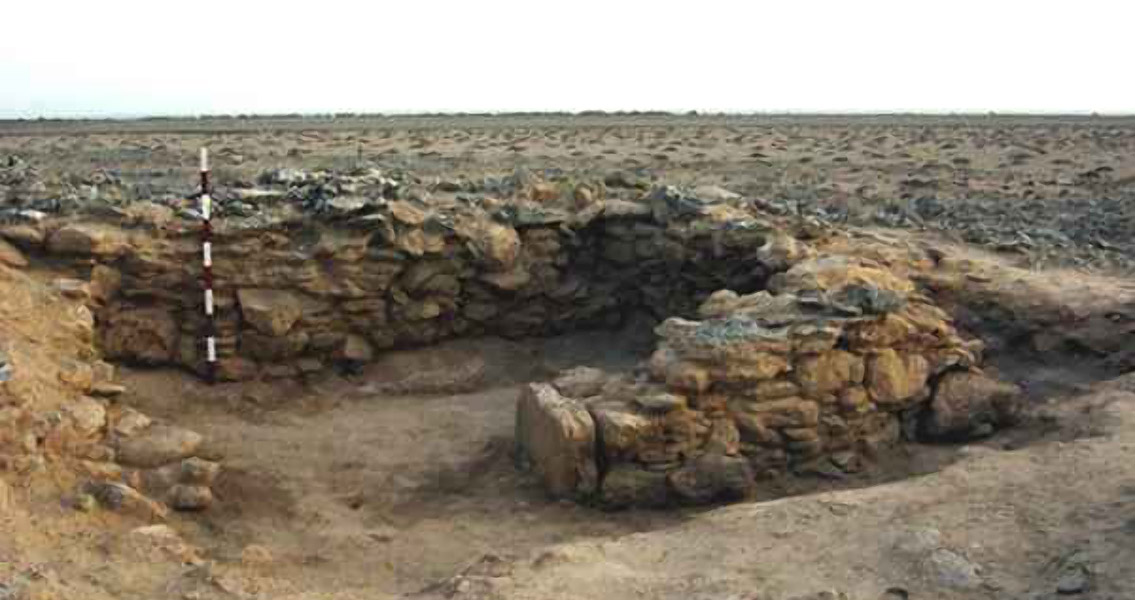<![CDATA[A structure discovered on Marawah Island off the coast of Abu Dhabi in the southern Persian Gulf of the United Arab Emirates has been revealed as the oldest known building constructed by the region's first residents using stone-built architecture approximately 7,500 years ago. Macabrely, the skeleton of one of these first residents of Abu Dhabi was unearthed inside the structure which at one time was a residence to the living, leading researchers to identify it as a “house of the dead”. The archaeological team, led by coastal heritage archaeologist Abdulla Al Kaabi, found the partial skeleton laying on its side in a crouched position with the head pointing to the east in a room of the semi-collapsed house. This type of human preservation is characteristic of Late Stone Age burials in the region, like those from Jebel Buhais in Sharjah; excavated in 1994. “I had to clean very carefully around the human bones as they were extremely fragile after being in the ground for more than 7,000 years. We had to treat the bones with Paraloid B72, a special consolidant, to strengthen them before we were able to lift them,” Al Kaabi told Dubai 92 Radio Privately owned, Marawah Island has been an important archaeological center since 1992, when a survey of the island completed by the Abu Dhabi Islands Archaeological Survey identified over a dozen sites dated from the Neolithic Period up to the Islamic Period between 12 CE and 13CE. Other houses discovered on the island date back 6,500 to 7,000 years, approximately 2,000 years prior to the first Egyptian Pharaoh. Additional findings at Marawah Island include pieces of Ubaid pottery which was created in a region of Mesopotamia that is Iraq today. The presence of this pottery indicates the Marawah settlers were actively involved in maritime trade. Marawah Island is approximately 13 kilometers (8 miles) in length and almost 5.5 kilometers (3 miles) in width. Excavations from Stone Age villages (MR I and MR II) on the island have provided researchers a glimpse into the daily lives of ancestral Arabs living in the region during a time when the climate was more conducive to life. Namely, it was wetter, and with the additional rainfall came a greener landscape and freshwater lakes. Additionally, the excavations show signs the people there had developed to having livestock and enjoyed a more sedentary lifestyle which was by no means primitive. Among the more interesting tools uncovered was a larger flint spear researchers speculate could have been used to hunt turtles or dugongs (a marine mammal related to the manatee). Other items found in the house include stone tools, stone and shell beads, and over 200 flint arrowheads. Archaeologists believe the site comprises only around 5 percent of the entire village, leaving a significant area to explore. Experts are set to examine the skeletal remains in order to learn more about these ancient people. Image courtesy of Abu Dhabi Islands Archaeological Survey ]]>
Home Is Where the Bones Are – UAE Find Deemed House of the Dead
